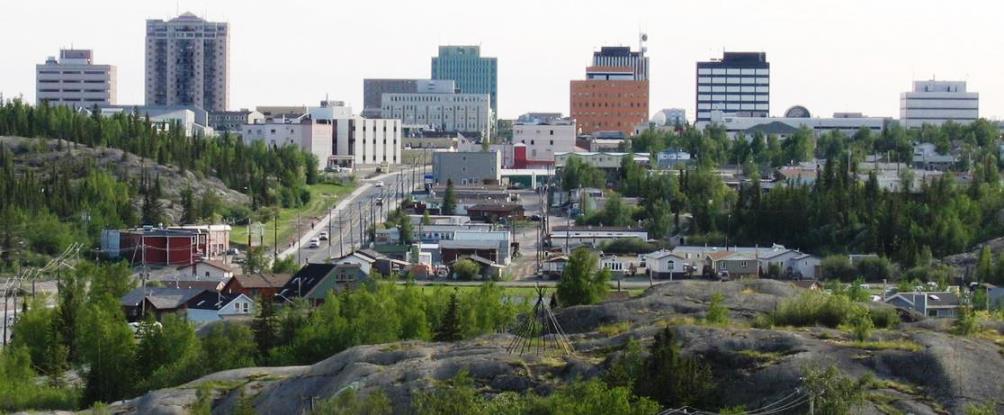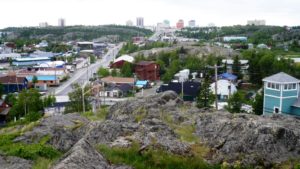Located approximately 400 km (250 mi) south of the Arctic Circle, Yellowknife is the capital of—and only city in—the Northwest Territories (NWT) of Canada. With a population of about 19,569, it’s on the northern shore of Great Slave Lake, which is on the west side of Yellowknife Bay, near the outlet of the Yellowknife River.
The Yellowknife settlement is assumed to have been founded in 1934, after gold was found in the area. But commercial activity in the present-day waterfront area did not begin until 1936. Yellowknife quickly became the center of economic activity in the NWT, and was named the capital of the Northwest Territories in 1967.
As gold production began to wane, Yellowknife shifted from being a mining town to a center of government services in the 1980s. However, with the discovery of diamonds north of Yellowknife in 1991,[11] this shift has begun to reverse.Now, an effort is underway to revitalize the downtown, which has suffered from unplanned (or badly-planned) sprawl, as have so many other city centers.
The City of Yellowknife has a new vision to revitalize the downtown core. The plan, unveiled at the city’s municipal services committee meeting on August 28, 2017, outlines five goals for revitalization
They include jump-starting development, providing more housing downtown, and creating a downtown “for all.” They are also envisioning a new visitor’s center, a sobering center (for the rather large population of alcoholics), a day shelter, creating pedestrian and cyclist pathways through downtown, and reducing or even eliminating bus fares.
Regarding that last point, some locals say that the problem with their transit isn’t the cost, but the level of service. Some claim that they can often walk to destinations quicker than they can get there by bus.
As with most cities, of course, objections to even the best revitalization efforts can arise when city leaders have conflicts of interest. The city has proposed putting limits on residential sprawl. One city councilor, for instance, owns a construction company that has profited from all that sprawl.
Not surprisingly, he says that he doesn’t think it’s the role of the city to limit development in certain areas. (Apparently, he’s not acquainted with the concept of urban planning.) “If we want to see some development in the downtown … we should be encouraging density there, not limiting it in other places,” he said. If not the city’s, then whose role is it, one might ask…
Note from Storm: Yellowknife’s builder/councilor needs to familiarize himself with the evidence from hundreds of other cities across North America. They have found that downtown redevelopment incentives only work well when you make the downtown the easiest and most profitable place for developers to work.
The only way that can happen is if the tactic of making downtown redevelopment cheaper is combined with the tactic of making sprawl more expensive. Besides simply limiting the amount of sprawl, cities can also stop subsidizing it. Most cities subsidize sprawl by assuming all or part of the cost of supplying the sprawl area with infrastructure. Putting that cost on the developer creates a powerful incentive for them to hitchike instead on existing infrastructure in the downtown.
Featured photo of the Yellowknife skyline is by Trevor MacInnis via Wikipedia.


